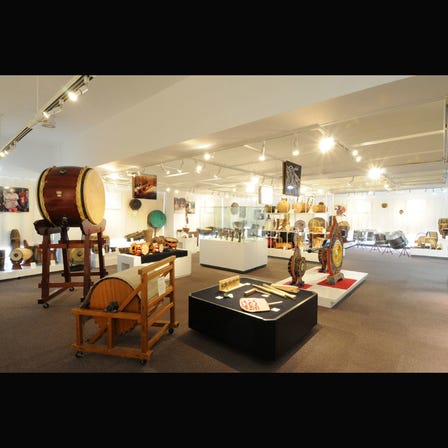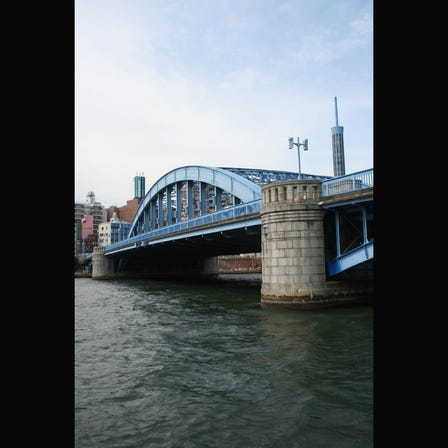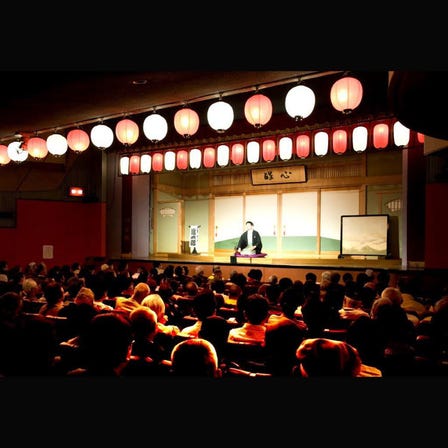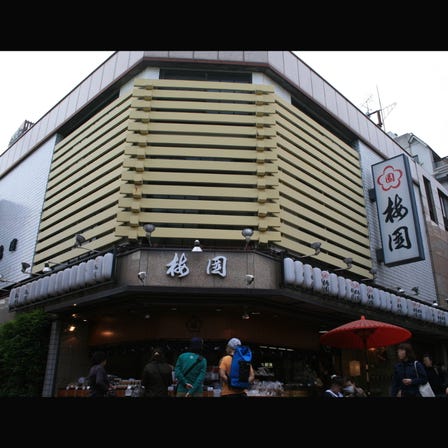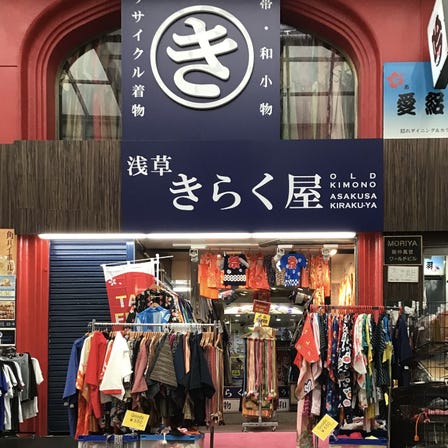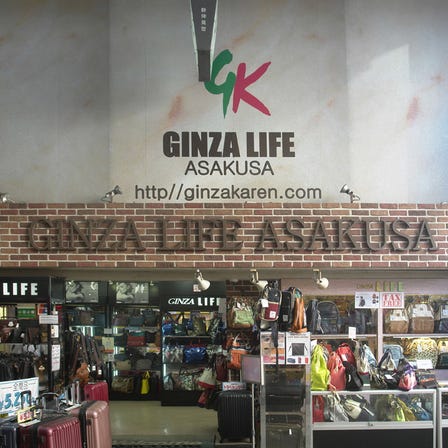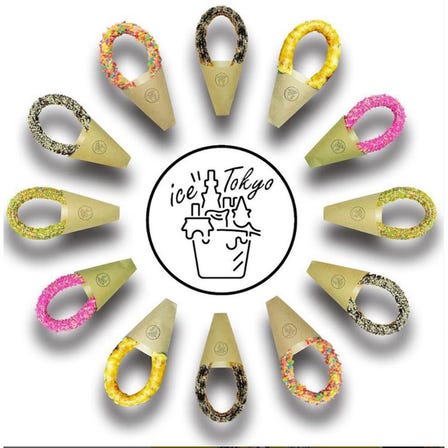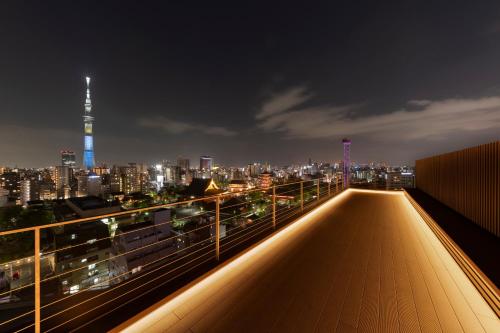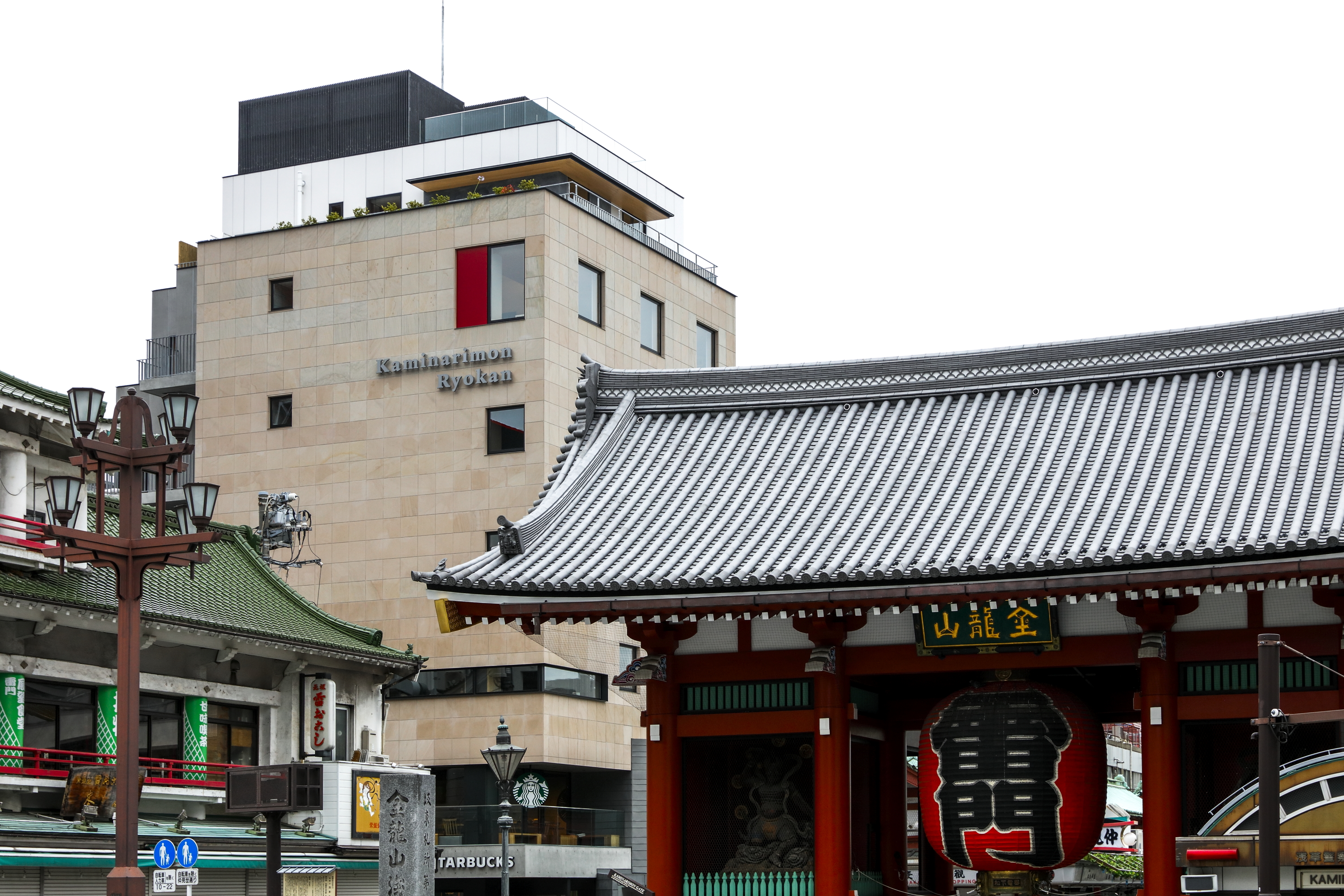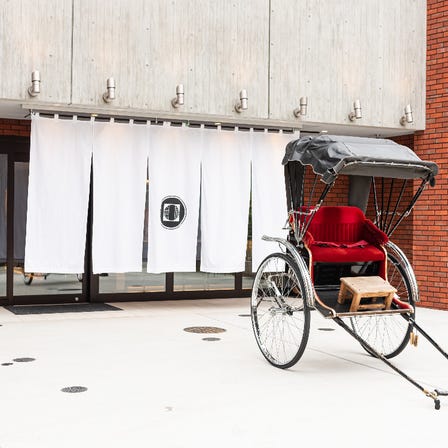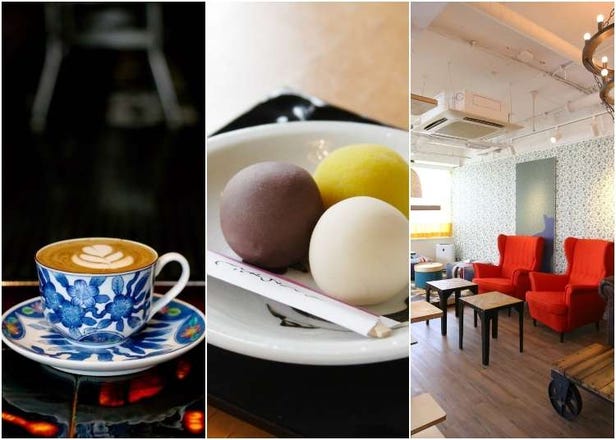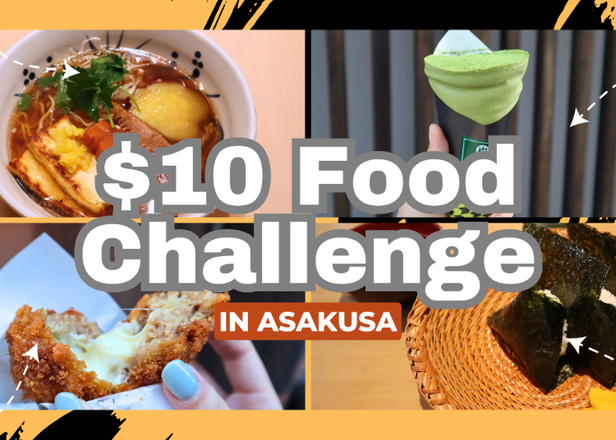
Asakusa
Asakusa:Overview & History

The best-known spot in Asakusa is Sensoji Temple, visited by 30 million people each year. The temple’s history goes back to the year 628. Legend has it that two fishermen, brothers Hamanari and Takenari Hinokuma found a wooden statue caught in a net in the Sumida River. They took it to one of the most respected persons in the area, Nakamoto Hajino. Hajino recognized the statue as the bodhisattva Kannon, and made his home into a temple for it. This was the beginning of Sensoji Temple. In 645, a hall was built for the Kannon by Shonin Shokai. After that, this fishing village on Tokyo Bay turned into a bustling temple town.
The Hinokuma brothers and Nakamoto Hajino are enshrined as gods at the Asakusa-jinja Shrine. The shrine holds the Sanja Matsuri (festival) in mid May, one of the most popular festivals in Tokyo. The area is also home to other lively events, including the Asakusa Samba Carnival (late August), Tori-no-ichi Market (mid to late November), and Hozuki Market (early July).
Asakusa:Area Introduction
Kaminari-dori area

Kaminari Gate (official name: Furaijin Gate) of Sensoji Temple, is one of the most famous sightseeing spots in Asakusa. The huge lantern under the gate is 3.9 meters high and weighs 700 kilograms. On its left side is a figure of the God of Wind, and to its right is the God of Thunder. Kaminari Gate was first built in 942, but it burned down a number of times. It was last rebuilt in 1960. Nearby is Kamiya Bar, the first bar in Japan (registered Tangible Cultural Property, built 1880). The interior is casual and similar to an old-fashioned Japanese diner <@|a=article:?sc_lid=lj_article_textlink@> where it is not uncommon for strangers sharing a table to strike up a friendly conversation. Kamiya Bar is known for its brandy-based cocktail, Denki (Electric) Bran. Along the road connecting Kaminari Gate and Kamiya Bar, close to the no. 1 exit of Asakusa Station on the Ginza subway line, is the conveniently located Asakusa Town Hotel. Also near Kaminari Gate is Joban-do Kaminari-okoshi confection shop, which sells the famous Kaminari Okoshi rice cookies. A 3-minute walk from the Gate will take you to the traditional tempura restaurant, Tempura Aoi-marushin.
First-time visitors can also visit the Asakusa Culture Tourist Information Center to learn more about the history of the area and enjoy occasional events throughout the year.
Nakamise-dori to Sensoji Main Temple area

Along the approach from Kaminari Gate to Sensoji Temple (250 meters long) is the Asakusa Nakamise Shopping Street. There are many tiny shops selling Japanese-style items, including handicrafts, accessories, knick-knacks, confections and more. Some shops carry antique ukiyo-e woodblock prints, so all in all, it is the perfect spot for Japanese culture fans. Confections are prepared on the spot, providing visitors with fresh sembei rice crackers, fried manju buns, and bean-paste filled ningyo-yaki, to name a few. Asakusa Kibidango Azuma makes and sells millet dumplings, a specialty that has been sold at the Asakusa Nakamise since the Edo era.
Once you make your way through the shopping street and past Hozomon Gate, you'll find yourself face to face with the Sensoji Main Temple. The structure you see here was completed in 1958 after the previous building was burned down in 1945 during the Tokyo air raids. Before entering the temple, wash your hands and rinse your mouth at the “water spot” in front of and to the right of the main building. Next get some of the “purifying” smoke from the incense burning in the huge vat in front of the stairs, and you'll be ready to go. The temple is divided into two parts, inner chambers and outer transepts. The transepts include the walkways, and the inner chambers are the tatami rooms. Visitors on the walkways can put their hands together in prayer towards the Buddhist figures inside the rooms. They can also get an omikuji fortune slip. Take off your shoes to enter the tatami chambers. No photography allowed.
Shin-nakamise-dori area
Shin-nakamise-dori is at the intersection at Shin-nakamise-dori Avenue close to Kaminari Gate. It is a roofed arcade, just right for a walk even in bad weather. On this shopping street are restaurants, confectioners, clothing and souvenir shops, and all kinds of places where both visitors and the locals can shop. Restaurant Imahan-honten was established in 1895, and is famous for its sukiyaki. There are other old, established shops dating back to Edo and Meiji eras. A number of other streets cross the arcade, and each of them have their own selection of restaurants and inns. One of these is Ryokan Asakusa Shigetsu, a cozy Japanese-style hotel about midpoint between the Kaminari and Hozomon gates.
Asakusa Kokusai-dori area
This road was named for the Asakusa Kokusai Theater, and has recently been nicknamed Beat Street. The entire area is filled with music halls, restaurants, hotels, and other commercial facilities. One commercial development Asakusa ROX was built on a spot that used to be covered in theaters for movies and live performances. On floors 6 and 7 of the main building, ROX, is Kenko Land Matsuri-yu, a place to try out and enjoy a variety of different communal baths and saunas. The outdoor bath has a view of Tokyo Skytree. Overnight stays are available Monday thru Saturday. If a good view is what you want, we recommend the Asakusa View Hotel, with guest rooms on floors 7 to 28. Enjoy a wonderful view of either Asakusa and Tokyo Skytree or Ueno-Shinjuku. The hotel is conveniently connected to the Tsukuba Express Asakusa Station. The area has many different places to eat, including the only restaurant in Japan specializing in lamprey (a fish known for its medicinal effects) served on skewers with a savory sauce (Yatsume Unagi Honpo).
Azuma Bridge area

Standing in front of Kaminari Gate and facing towards Sumida River, you'll see a bridge with red balustrades. This is Azuma Bridge. From the Asakusa side of the bridge you can see Asahi Beer Tower, representing a foamy mug of beer, across the river. Also note Super Dry Hall. The roof design, entitled Flame d'Or, was designed by French artist Philippe Starck. Because of the terrific view of a number of Tokyo landmarks, including Skytree, most visitors to the bridge take lots of pictures. Close by is the Sumida Ward Hall, which has a statue of Kaishu Katsu, an eminent figure born at the end of the Edo era. This is a must-see for history buffs. To the side of Azuma Bridge is the boarding pier for Tokyo Cruise boats. Enjoying a ride up the river to the Hamarikyu Gardens or Hinode Pier, you can get a feel for how people got around the metropolis during the Edo era.
Kototoi-dori area

Behind Sensoji Temple, Kototoi-dori Ave. crosses Sumida River at Kototoi Bridge. This bridge was a site of tragedy during the 1945 Tokyo air raids. People on both sides of the river were convinced they would be saved if they could only get to the other side. Most of them were burned to death, unable to move in the ensuing rush. Today, however, the bridge is a much more peaceful spot, with tourists taking photos of Tokyo Skytree. Close to Sensoji is the Amuse Museum with exhibits of art made from scraps of old cloth and shops selling Japanese-style accessories. Don't miss the Ukiyo-e Digital Theater that shows high-definition videos of the Spaulding Collection (Boston Art Museum) of ukiyo-e, which for storage purposes, cannot be exhibited. In the same vicinity is Toritako, an old restaurant that serves chicken dishes to no more than five small parties of customers a day. Reservations only. A quick five-minute walk from Sensoji and the Tsukuba Express Asakusa Station is the Japanese-style Asakusa Hotel Waso.
Edo-dori area
Extending from the West intersection of Kototoi Bridge towards Asakusa Bridge and beyond is Edo-dori Avenue. Beyond Asakusa Station and Kuramae is the World Bags & Luggage Museum. Learn about the history of luggage and see some unique collections from throughout the world. In the vicinity is Komagata Dozeu, a restaurant that catered to the taste of the common folk during the Edo era. Today it still serves hot-pot meals featuring dojo (loaches, small freshwater fish) that were so popular more than 200 years ago. A little bit farther along, and visitors will find themselves in the Edo-dori wholesale district map, full of warehouses handling Japanese dolls, stationery, toys, handicrafts and more.
Asakusa:Must-See Events
Early February: Setsubun
Sensoji Temple’s Setsubun is an ancient event held to celebrate the arrival of spring. Participate in the traditional bean throwing and enjoy dances and performances.
Mid-May: Sanja Matsuri

The largest, most famous even of Asakusa’s Sensoji Temple. Watch the energetic, dazzling parade of about 100 portable shrines through the streets of the neighborhood.
Mid-August: Asakusa Toro Nagashi

Held for the first time in 1946 as a memorial to those fallen in the war, watch as hundreds of paper lanterns are set afloat on the Sumida River, illuminating the night in a solemnly beautiful way.
November: Asakusa Tori no Ichi

Tori no Ichi is an outdoor market held to show one’s gratitude for getting safely through the year and praying for happiness and prosperity for the next. The venues of Chokokuji temple and Ohtori Shrine are crowded with people seeking to buy traditional talismans and lucky charms.
Asakusa:Access
Access from Narita Airport to Asakusa
From Narita Airport Station (Terminal 1), take the Keisei Narita Airport Line (Access Express) bound for Narita Airport Domestic Terminal. After about 58 minutes, get off at Asakusa Station.
Access from Haneda Airport to Asakusa
From Haneda Airport International Terminal Station (Keikyu), take the Keikyu Airport Line (Limited Express “Kaitoku”) bound for Aoto. After about 33 minutes, get off at Asakusa Station.
Latest Spot Info
- Coupons
- Events
- Goods
-
Kimono1,100 - 33,000JPY(Including tax)See all 5 items
- popular
- souvenirs
- present
- Japanese culture
- Japanese Clothing & Kimono
- Clothing Stores
2hours ago
Visiting
Popular Spots
Choice Spots
Eating
Popular Spots
Choice Spots
Shopping
Choice Spots
Selected Articles
-
Asakusa Winter The Latest
-
Asakusa Other Cafes and Sweets The Latest
-
Asakusa Ramen The Latest


























